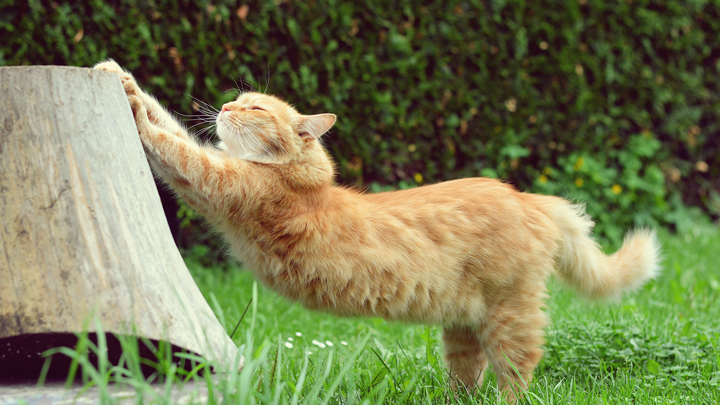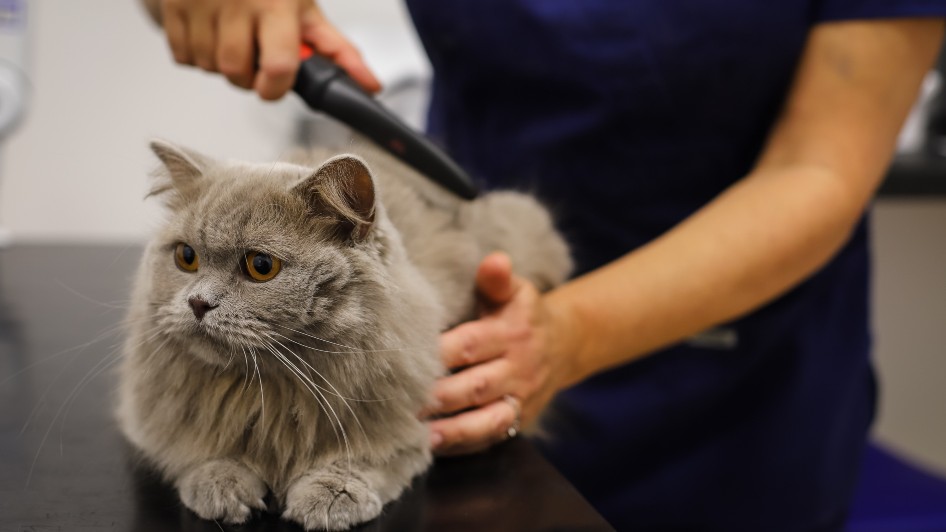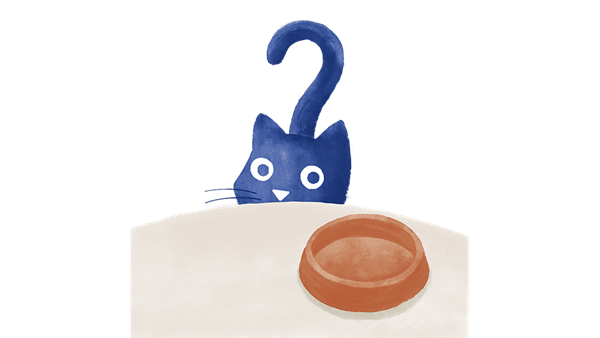Fleas: Advice And Treatment For Cats And Kittens
Fleas are a common skin parasite that affect cats (& dogs), they aren’t fussy about which species they live on or feed off. They can be incredibly uncomfortable for your cat and left untreated they can lead to more serious illnesses.

Fleas are particularly dangerous for young kittens, because their bodies are so small. If a kitten gets fleas they can develop flea anaemia, caused by the loss of blood from the fleas feeding. Please note that you should always check that any flea treatment you use is suitable for young kittens.
It’s important to check your cat for fleas all-year round so that you can catch any fleas early, before they have an opportunity to lay too many eggs around your home. It is equally important to ensure that you regularly clean your cat’s beds and any blankets that they love to lounge on.
Check for fleas when you are grooming your cat, depending on the colour of your cat they can be pretty easy to spot, especially if you’re able to use a fine-tooth comb. They will tend to be in warmer places such as under the chin, around the neck, in the ‘armpits’ and also under collars if your cat wears one. You might see live fleas or just the ‘flea dirt’ on your pet, be warned fleas are very quick and some can jump 100 times their own body length.
Fleas aren’t the only crawlers that will try and make your cat uncomfortable – read more on other annoying parasites here.
To tell the difference between flea dirt and regular dirt, place some onto a white paper towel and sprinkle a few drops of water onto it. If the speck turns a dark reddish-brown colour, it’s most likely flea dirt.
Signs and symptoms of fleas in cats and kittens
Although fleas are tiny (between one and three millimetres), they are visible, so if you look carefully you should be able to see them. The best opportunity to check your cat for fleas is while you groom them. Run a special flea comb through their fur, paying particular attention to areas like the armpits and groin where fleas like to hide.
Other signs that your cat may have fleas:
- Red inflamed skin with scabbing
- Regular scratching or chewing of an area
- Biting of the skin, which can lead to hair loss
- Flea dirt - tiny bits of dark dust in your cat’s fur
- Flea bites – itchy bites for you and your family
Remember though that a cat can have fleas and not be itchy, it just means they haven’t multiplied enough…yet!
What’s the best way to treat my cat for fleas?
While it is possible to purchase flea treatment and collars over the counter and in many supermarkets, these tend to be older and less effective products, that many fleas are resistant to. The treatment that your vet can prescribe will not only be more effective, it will usually treat other parasites in single treatment too. There are many different options available, talk to your vet about the best option for your cat.
The Medivet Healthcare Plan is a good way to ensure your cat gets flea protection all-year round.
If you have more than one pet, you must treat all pets or you will never get rid of the fleas, they’ll simply hop back on at the next opportunity. Similarly, you must treat your home too as there could be hundreds of eggs waiting to hatch and find a host at any given opportunity. It is estimated that around 5% of flea eggs, larvae and pupae live on your pet, the other 95% live in the environment. Your vet will be able to discuss effective treatments for around the home and offer advice on ensuring that the fleas are eradicated.
Benefits of prescription only medication
Pharmaceutical companies are continuously developing new and more effective flea treatments which, amongst other things, enable the simultaneous treatment of additional parasites. Due to the nature of these products they can only be prescribed by a vet who will recommend the most suitable one for your pet after considering their age, breed, history, weight and lifestyle. The practice team are also able to help with queries on how to give flea and worm medication and may assist with administering medication.
Could my cat be allergic to fleas?
Yes, it is not uncommon for cats to be allergic to the saliva in flea bites. If your cat is allergic to flea bites you may notice one or more of the following:
- Over grooming to the extent that there is visible hair loss
- Sore and inflamed skin
- A cluster of small scabs, usually around their neck or the base of their tail
If you believe that your cat is allergic to flea bites, then you should consult your vet who will be able to help.
Will my cat only have fleas in the summer?
It’s a common myth that fleas are only around when the weather is warm, this isn’t necessarily the case. Fleas can be more prevalent in the summer months, but a flea infestation can happen at any time of the year, for example when you switch on your central heating in the colder months. In fact, because flea eggs fall from your pet, they can easily become lodged in carpets and cat beds around the home. The signal to hatch can be when you next turn your heating on.

Can indoor cats get fleas?
Yes, indoor cats can still get fleas. Fleas can be carried in on other pets, via humans (pretty rare), or even on second-hand blankets or beds etc. Fleas are also renowned for laying thousands of eggs, if you move into a new home it’s possible that whilst it looked clean there could be hundreds of eggs waiting to hatch and find a host at any given opportunity.
Important: You should never use a flea treatment formulated for dogs on your cat. They often contain permethrin, which is very toxic to cats. Also bear in mind some products for cats are unsafe for kittens. Please check with your vet if you’re not sure.

Speak to your vet to book an appointment

Medivet Healthcare Plan
On average our clients save an average of £225 with the Medivet Healthcare Plan.
Learn more


